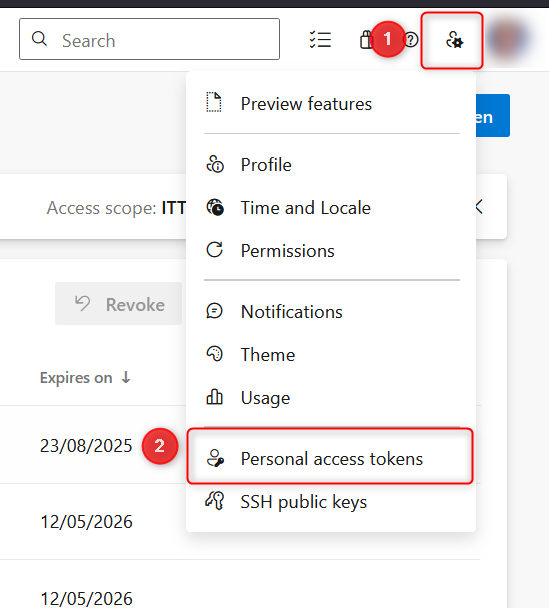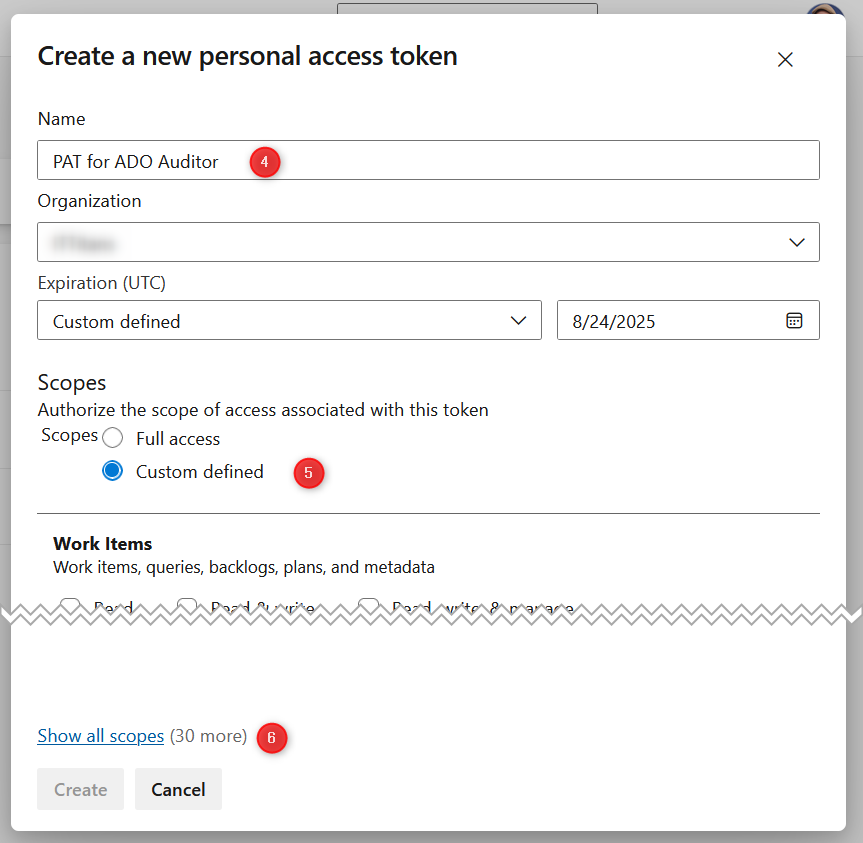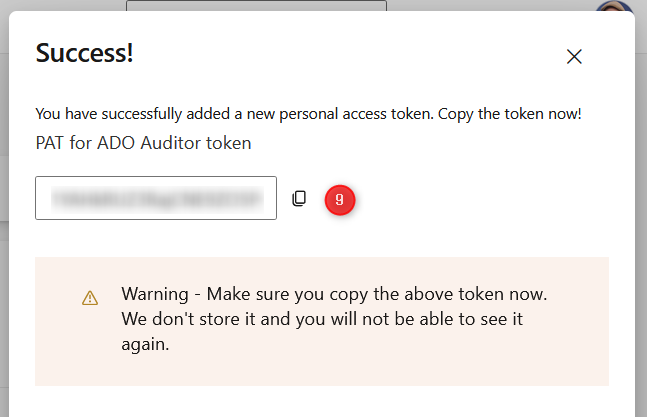Documentation
PAT Generation
What is a PAT?
PAT stands for Personal Access Token and is your key to the Azure DevOps APIs.
Why do I need it?
As we use official Azure DevOps APIs to feed our rule engine with data, we need the PAT to be able to access the organizations data on your behalf.
How do I get a PAT?
Just follow these easy steps and you will get a PAT that can be used for your free audit in a couple of seconds.
Sign In to Azure DevOps
Go to: https://dev.azure.com/ and sign in with your organization-connected Microsoft account.
Be sure to select the correct Azure DevOps organization your want to audit if prompted.
Open the "User settings"
1. In the top-right corner, click on "User settings" just next to your profile picture.
2. Select "Personal access tokens" from the dropdown.

Create a New Personal Access Token (PAT)
3. On the Personal access tokens tab, click "New Token".

Configure the PAT Details
4. Configure the PAT details as needed:
Name: Give your token a meaningful name, e.g., "PAT for ADO Auditor".
Organization: Select your target organization (the organization you want to audit).
Expiration: Choose an appropriate lifespan. We recommend to keep it as short as possible, e.g., just for the time of the audit.
5. Choose to configure the PAT scopes:
Scopes: Select "Custom defined".
6. Click on "Show all scopes"

Set Custom Scopes
7. Choose the required scopes to audit your organization
You will need to set several scopes as shown in the table below:
| Scope | Access | Endpoints |
|---|---|---|
| Graph | Read | |
| Member Entitlement Management | Read | |
| Project and Team | Read | |
| User Profile | Read | |
| Token Administration | Read & Manage |
An example to set the "Graph" scope with "Read" access:

Note that we keep the scopes required to audit your organization at a minimum.
Each scope we request is mandatory and the audit will fail when the PAT is missing these scopes.
Create the PAT
Review your selected scopes. Make sure that you provide at minimum the exact scopes we listed above.
Additional scopes won't affect the audit but it's best practice to provide only the strict necessary scopes.
8. Once done, click "Create".

Copy the PAT
9. Copy the token shown immediately after creation.
You won't be able to see it again. If you miss copying the PAT, you need to create a new PAT. Be sure to delete the old PAT in this case.
Store the PAT securely (e.g., in a password manager or secret vault).

Notes
PATs are used for authenticating via scripts, REST APIs, and tools that don't support Azure AD authentication.
Always follow least privilege principles and set expiration dates thoughtfully.
You can revoke or regenerate tokens at any time from the same security settings page.
We've created a step-by-step guide to assist you with this: Revoke a PAT.